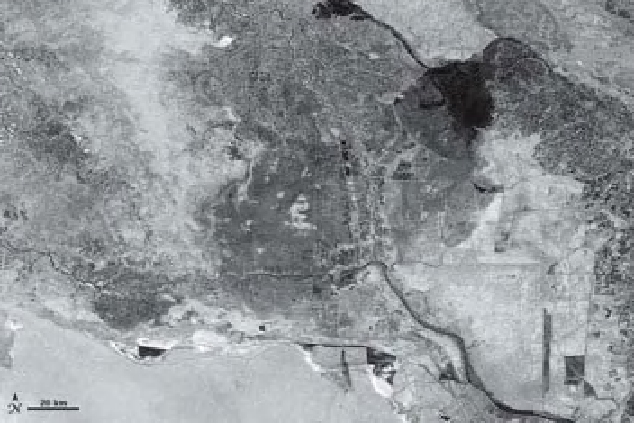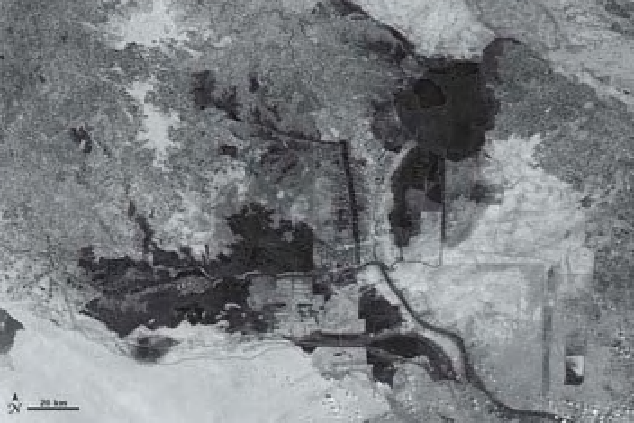Geoscience Reference
In-Depth Information
A
B
Figure 13-8.
MODIS images of the Mesopotamian Marshes in southern Iraq. A - February 2002 shows the marshes
almost entirely dried out due to water diversion and impoundment activities. B - February 2007 shows some
restored marshes, water bodies and wet surface areas (dark gray) after a few years of re-l ooding efforts. Images
adapted from NASA's Earth Observatory
<
http://earthobservatory.nasa.gov/
>
.
treatment wetlands across Europe and about
1000 in the United States (U.S. Environmental
Protection Agency 2004). They are built prima-
rily to take advantage of the water-quality
enhancement and purii cation functions of
natural wetlands.
As chapter 11.3.2 elaborates, wetlands act
as natural i lters and may effectively trap sus-
pended solids, particulate matter, litter and
debris. Wetland vegetation and microbes aid in
the uptake of nitrogen and phosphorus, and
chemical processes facilitate the incorporation
of such toxic metals as lead, copper and mercury,
among others (DeBusk and DeBusk 2001;
Vymazal et al. 2006; Vymazal 2008). Such prop-
erties make wetlands particularly suitable to
treat waste water or improve water quality and
may be more economical and sustainable than
maintaining conventional waste-water treatment
facilities (U.S. Environmental Protection Agency






